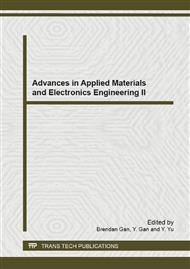p.16
p.21
p.26
p.32
p.37
p.42
p.46
p.53
p.57
The Study on Deposition Process and Mechanical Properties of Deposited Cu Thin Films Using Molecular Dynamics
Abstract:
This paper studies the deposition process and mechanical properties of Cu thin films deposited on single crystal copper substrates with various surface roughnesses by molecular dynamics (MD). In the effect of vacancy concentration (Cv) of substrate, the Young's modulus of sample decreased as the Cv of substrate increased but the adhesion force will increase as the Cv of substrate increases. The effect of substrate roughness on the peak intensity of crystal orientation has little. And the greater Cv of substrate, the surface roughness of the deposited thin film also increased. In the effect of numbers of deposited atoms, the deposited thin film thickness increases, the surface will be relatively flat and the Young's modulus will also increase. By the XRD pattern, the principal growth directions of thin film are the (220) and (200) in the early stage of growth during deposition. However, with the thickness increasing, the (111) will be the preferred orientation.
Info:
Periodical:
Pages:
37-41
Citation:
Online since:
April 2013
Authors:
Price:
Сopyright:
© 2013 Trans Tech Publications Ltd. All Rights Reserved
Share:
Citation:


